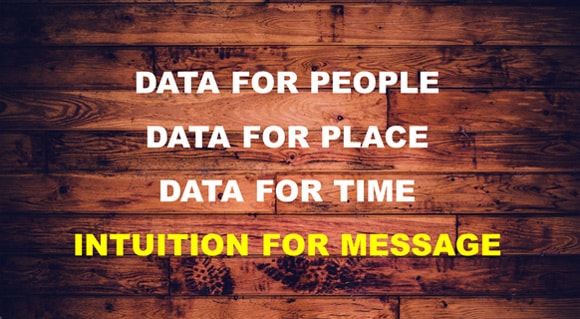Digital communications provides a wealth of data, but does this abundance of data decrease the requirement for creative excellence within marketing communications? Or does the insight from data merely empower creative communicators to target their audiences more effectively?
This was the central question at our latest In-House Communicators seminar held in partnership with the good guys at Splendid last week.
Our speakers and panellists talking us through the trends in this area were:
- Oli Francis head of creative in content PR, Sky @generalfranco1
- Gavin Taylor, head of performance, Splendid Communications@SplendidComms
- Daisy Hawker Wallace, head of PR, Virgin Trains @DaisyEWallace
- Serena Mariani, Senior global marketing manager, digital - Oral Care Brand, Unilever @social_serena
Clearly, the use of data in marketing communications is on the rise, as this graphic demonstrates:
How marketers are using data

Sky’s Oli Francis's view was that “data now has the upper hand over intuition for marketing creativity.” Perhaps a surprising revelation bearing in mind Oli’s head of creative job title.
That said, Oli argued that good data insight and artistic direction, ideally combine to create excellent creativity.
The creativity formula:

When data and an artistic intuition are used together, creativity should thrive but data can also limit the risk of a creative idea; it can highlight whether the idea or campaign is appropriate or likely to resonate with the right audience. So data can help you manage your creative risk.
Creative risk formula:

Virgin's Daisy Hawker Wallace said that where she found data most useful was in understanding customer trends to identify markets for campaigns, rather than using data to come up with the creative idea for the campaign itself. This seemed a grown-up way of looking at this debate. The idea that the science element of public relations has created a tension with the artistic side of public relations is probably naïve, the data creates opportunities for organisations to develop ideas that engage customers.
This theme was brought to life by Splendid’s Gavin Taylor who argued “data is great for identifying the right people, in the right place at the right time, but don’t default to the data insight to inform your messaging.”
Gavin goes on to say that with the "abundance of data... marketing has become easier. There is a certain safety net that accompanies the richness of data. And it is much easier to get budget for an activation if you can argue “trends show that this message will resonate with our audience…”
Virgin’s Hawker Wallace added: “Whether you use the data is down to whether you trust it. There is always a new angle and it’s whether you trust the source that counts.”
Unilever’s Serena Mariani was responsible for audible gasps from the audience when she revealed one of the downsides of data, uncomfortable facts! For example, apparently “most people don’t brush their teeth twice a day!”
In conclusion, this slide from Spendid’s Gavin Taylor, along with his final points, sums things up nicely:

- Developing a story that travels can be data driven, however it can hinder the creative potential.
- Thinking of PR as relating to the public will unlock creative routes that span across multiple touch-points.
- Discovering the real world truth will take you along the path of finding an idea that people give a damn about.
- Data most definitely has a role in planning how to amplify the idea, however the idea should earn credibility and be strong enough to remain intact wherever it is told.
- For a full understanding of how the idea resonated, development of a multi touch-point KPI matrix will help align with business goals.
PRmoment Leaders
PRmoment Leaders is our new subscription-based learning programme and community, built by PRmoment specifically for the next generation of PR and communications leaders to learn, network, and lead.
PRmoment LeadersIf you enjoyed this article, sign up for free to our twice weekly editorial alert.
We have six email alerts in total - covering ESG, internal comms, PR jobs and events. Enter your email address below to find out more:










